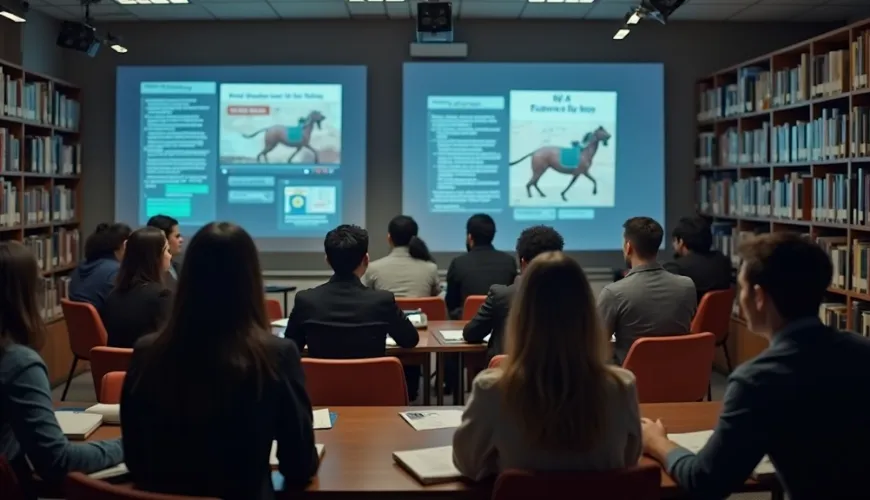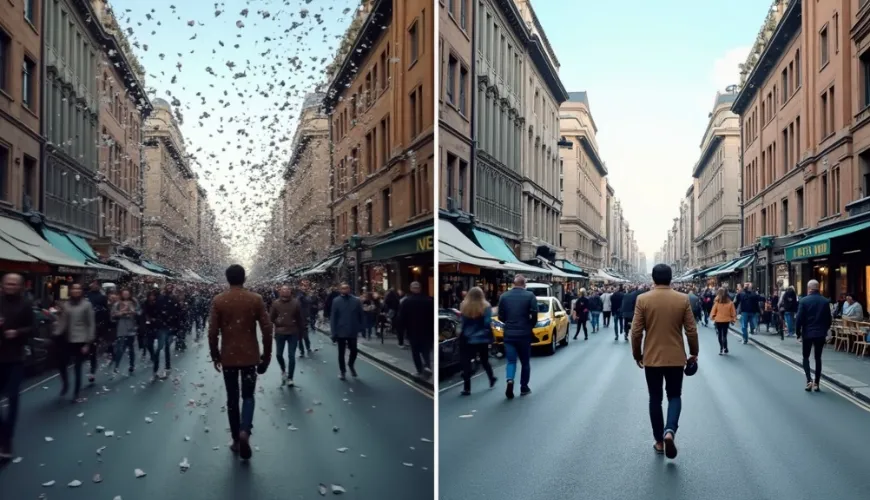How to Remove Watermarks with AI: The Smart Way to Clean Up Your Media
Watermarks are everywhere—on stock photos, sample videos, or shared images online. While they serve an important purpose for protecting ownership and copyright, there are legitimate reasons you might want to remove a watermark. Maybe you're working with your own content and lost the original file, or you're testing out media before purchasing a license. In these cases, AI watermark removers can be a powerful tool.
Thanks to modern AI image and video editors, you no longer need advanced Photoshop skills or spend hours editing frame by frame. This guide will walk you through how to remove watermarks using AI, what tools to trust, and when it's okay to do so.
TL;DR
- AI lets you delete watermarks in seconds without Photoshop skills.
- Five leading tools—HitPaw, Cleanup.Pictures, Inpaint, SnapEdit, and Claila's beta image‑cleanup—cover images and, in HitPaw's case, video.
- Always respect copyright; remove marks only from content you own or are licensed to edit.
Is Removing a Watermark Legal?
Let's clear the air first: removing a watermark without permission can violate copyright laws. If the content isn't yours or you haven't acquired the proper license, don't use it commercially or publicly. However, if you're working with:
- Your own image or video files
- Content under Creative Commons
- Files with permission or purchased licenses
- Watermarked media you're testing before buying
…then removing the watermark using AI is generally accepted.
Always aim to respect intellectual property rights. When in doubt, ask the content owner or consult our guide on robot‑naming best practices to see how licensing works in creative fields.
What Is an AI Watermark Remover?
An AI watermark remover uses machine learning models to analyze an image or video and intelligently fill in the space where the watermark was. Unlike traditional methods like clone stamping or cropping (which can distort the image), AI tools reconstruct missing pixels using contextual data.
That means cleaner results, less manual effort, and faster workflows.
Some AI tools specialize in removing watermarks from images, while others can handle videos frame by frame, recreating smooth sequences without visual artifacts.
Top Reasons People Use AI to Remove Watermarks
Why are so many people turning to AI-powered tools? Here are a few real-world scenarios:
- A small business owner wants to test how a stock image looks in a website layout before buying it.
- A content creator lost the original, unwatermarked video after editing and needs a clean version for reposting.
- A photographer accidentally uploaded a watermarked version to a client and needs to fix it quickly.
- Designers want to remove timestamps or logos from branded templates they've customized.
With AI tools getting smarter, the process is often just a few clicks.
Best AI Tools to Remove Watermark from Images
When it comes to images, you want tools that give you natural-looking results without blurring or distortion. Here are some of the best-rated options available:
1. Claila
Claila is a powerful AI productivity platform that integrates various models like ChatGPT, Claude, Mistral, and image processors. With Claila, you can upload an image and use its upcoming AI image‑cleanup tools (currently in beta) to intelligently erase text, logos, or semi-transparent elements without damaging the surrounding visuals.
Real use case: A freelance designer used Claila to touch up a product photo that mistakenly had a demo watermark. In less than a minute, the image was clean and ready for the client.
2. HitPaw Watermark Remover
Available for both Windows and Mac, HitPaw allows users to highlight the watermark area and choose from several AI-powered removal modes. It works well on both text watermarks and logos.
3. Cleanup.Pictures
This online tool offers a drag-and-drop interface. You simply upload the photo, brush over the watermark, and let the AI fill in the background. It's quick and doesn't require any software installation.
4. Inpaint
Inpaint is another browser-based tool that offers solid AI-based watermark removal. It's especially good for landscape photography where the watermark sits on a textured background.
5. SnapEdit
SnapEdit offers a dedicated Remove Watermark mode driven by generative AI. Drag, brush and export—ideal for social‑media sized graphics.
For a broader look at AI‑powered image editing, check out magic eraser tips.
How to Remove Watermark from Video with AI
Editing videos is a bit trickier than images, but AI has made huge strides here too. Frame-by-frame editing used to be the only way. Not anymore.
Best AI Video Watermark Removers
Here are a few tools that stand out:
1. HitPaw Video Watermark Remover
A sister tool to its image counterpart, HitPaw's video version lets you import videos and auto-detect watermarks. It even supports batch removal for multiple clips.
2. Apowersoft Online Video Watermark Remover
This cloud-based tool doesn't require a download and supports all major formats. Just upload the video, mark the watermark area, and let AI do the rest.
3. Media.io Watermark Remover
This online tool offers watermark removal for images and short video clips (PDFs are not supported). It's user-friendly and efficient for cleaning up short clips or social media content.
4. Claila (for developers)
Claila supports AI model access for devs through API integrations. If you're building a media app or need watermark removal at scale, Developers can still tap models such as Mistral or Claude via Claila's API for other vision tasks (e.g., background removal), while watermark‑specific APIs are better sourced from HitPaw or SnapEdit for now.
Need more visual hacks? Our walkthrough on ai‑map‑generator shows how to create custom backdrops once your footage is clean.
Step-by-Step: Remove Watermark from Image Using Claila
Here's an example workflow using SnapEdit in just a few steps:
- Open Claila.com and sign in.
- Select the image editor or AI image tool.
- Upload your image with the watermark.
- Use the brush or selection tool to highlight the watermark area.
- Click "Remove" – the AI will analyze and reconstruct the selection.
- Download your clean image.
It's that easy. And the results are often indistinguishable from photos that never had a watermark in the first place.
What Makes a Good AI Watermark Remover?
Not all AI tools are created equal. When choosing one, look for:
- Accuracy: It should remove the mark without leaving blur trails.
- Speed: Instant preview and fast download are a must.
- Supports Complex Backgrounds: A good tool can handle gradients, patterns, or textures.
- No Watermark on Output: Ironically, some tools leave their own logo. Avoid these.
- Privacy: Check which tools delete your uploads after editing.
Always test a tool with low-risk content before using it on sensitive projects.
Pros and Cons of Using AI to Remove Watermark
Here's a quick breakdown to help you decide if AI removal is right for your needs:
Pros:
- Fast and beginner-friendly
- Doesn't require expensive software
- Handles both photo and video
- Natural-looking results
- Works well on complex media
Cons:
- Results vary based on image quality
- May struggle with heavily embedded or animated watermarks
- Legal gray areas if content isn't yours
Curious about detection risks? See the benchmarks in zero‑GPT accuracy tests.
Real-World Example: YouTubers and TikTok Creators
Many short-form content creators repurpose clips. Say a TikToker wants to use a watermarked caption template to brand their video. After exporting, they realize the watermark was meant only for preview.
Rather than starting over, tools like Claila or Media.io can clean up that frame and let them keep the momentum going. It's a game-changer for fast-paced content production.
Can AI Remove Watermarks Without Leaving Traces?
Yes, AI output is often hard to spot when the watermark sits on a plain background, Newer algorithms use deep learning to approximate lost pixels and match surrounding tones, creating a seamless finish.
But if the watermark is over a face, detailed object, or dynamic video frames, even the best tools might leave subtle hints. That's why it's smart to always keep a backup and inspect closely before publishing.
Ethics and Best Practices
Just because you can remove something doesn't always mean you should. Ethical creators use watermark removal tools responsibly.
Here's a quick checklist:
- ✅ Only edit content you own or have licensed
- ✅ Use AI to restore or clean up your original files
- ✅ Don't distribute unlicensed, altered media
- ✅ Credit creators or pay for usage when appropriate
If you're ever unsure, reaching out to the source or choosing royalty-free alternatives is a respectful move.
Why AI Tools Like Claila Are Changing the Game
The rise of platforms like Claila marks a major shift in how we interact with digital content. By offering access to multiple top-tier AI models under one roof, users get speed, quality, and flexibility. Whether you're removing watermarks, generating text, or creating visuals, Claila is becoming the Swiss Army knife of content creation.
According to a report from MIT Technology Review, AI tools that enhance creative productivity are seeing record adoption rates, especially among freelancers and small teams[^1].
[^1]: MIT Technology Review. (2023). "How Generative AI Is Supercharging Creative Workflows.”
Wrapping It All Up
Watermarks might protect original content, but they shouldn't hold back your creative flow—especially when you're working with your own media or have the rights to use it.
Thanks to AI, removing a watermark from an image or video is no longer a chore. With tools like Claila, HitPaw, and Media.io, you get professional results in seconds. Just remember to use them ethically, respect ownership, and keep creating boldly.
In a world where content is king, a clean canvas isn't a luxury—it's a necessity.



